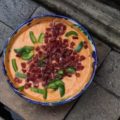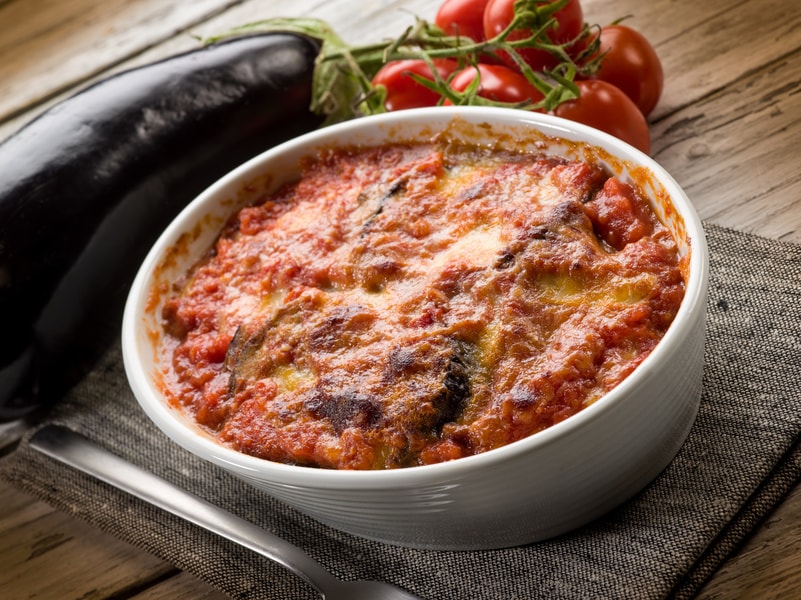
Katherine Wilson is a US-born artist who moved to Naples, Italy, where she met the love of her life. In approaching and getting to know the culture of her host country, Katherine used a safe channel: food! It was around the table, learning to cook and to use all the tips and tricks of her mother-in-law, that Katherine discovered many aspects of the deep, beautiful Neapolitan humanity and traditions. This experience became material for Katherine’s book, Only in Naples – Lessons in Food and Famiglia from my Italian Mother-in-Law. Here Katherine talks about it.
Only in Naples is technically a memoir about my experiences in Naples, Italy, but it is more correct to describe it as a love letter to a city and to a family.
I was embraced by my husband’s family and became instantly part of Neapolitan life.
I found that, contrary to what I expected, Neapolitan culture was magical, often hilarious, and deeply healing. There was a great wisdom in the way people approached life, from the art of “sdrammatizzazione” in moments of difficulty, to the sense of “carnale“: an ease and comfort in one’s own skin.
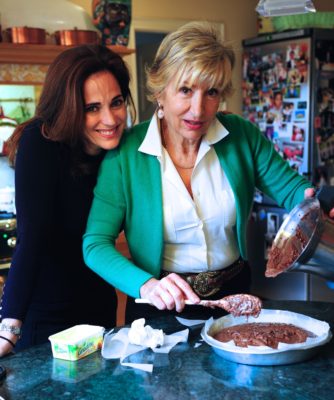 I found that I wanted to share what I had learned and experienced in Naples with my American friends and family. I wanted to take them on a trip to Naples, with its rich history and colorful dialect, and more specifically I wanted to invite them into my mother-in-law’s kitchen — a place where you need to give up control and let yourself be fed.
I found that I wanted to share what I had learned and experienced in Naples with my American friends and family. I wanted to take them on a trip to Naples, with its rich history and colorful dialect, and more specifically I wanted to invite them into my mother-in-law’s kitchen — a place where you need to give up control and let yourself be fed.
There have been two main reactions to my book that have made me so happy: one is that people have written me to say that they are booking a trip to Naples. The other is that the book made them hungry… and then they specify that it was a “good kind of hungry”! I answer that hunger in Naples is always good, it’s a sign that you’re alive.
I studied anthropology in college, and was interested in understanding human relationships in the family and culture where I’d ended up. I found that relationships in Naples played out in the preparation and consumption of food. For example, how did my husband know that his sister’s marriage was heading for divorce? He found the bags from a discount supermarket in her kitchen: she was obviously no longer cooking with love.
Jealousy, loyalty, love, rivalry, affection – all these sentiments were played out around the table at Sunday lunch. Everything could be found in the Neapolitan ragù!
We asked Katherine to give us her favourite recipe, and she was so nice as to allow us to publish her mother-in-law detailed recipe of Parmigiana di Melanzane, which you can find on Only in Naples. We made it a bit shorter for Expatatable, but we strongly suggest you to buy the book to read it in all its fantastic cultural details! You can buy Only in Naples here and here. Thank you so much Katherine!
Parmigiana di Melanzane (Serves 6 to 8)
4 pounds eggplants (see below for physical requirements)
Two 15-ounce cans of Italian peeled, whole tomatoes
10 basil leaves
1 clove garlic
Salt to taste
2 cups peanut oil
1 cup grated Parmesan cheese
1 cup fior di latte or other soft mozzarella-like cheese, cut in cubes a little smaller than dice
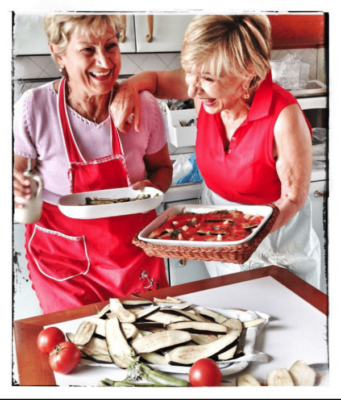 Your eggplants must be long, skinny, hard, and so dark they’re almost black. Eggplants with the least pulp and seeds make the best parmigiana. The ones you find in winter tend to be fleshy and moist inside and need to be dried out for at least a day. Otherwise all their white flesh will absorb the frying oil and you’ll get a greasy parmigiana
Your eggplants must be long, skinny, hard, and so dark they’re almost black. Eggplants with the least pulp and seeds make the best parmigiana. The ones you find in winter tend to be fleshy and moist inside and need to be dried out for at least a day. Otherwise all their white flesh will absorb the frying oil and you’ll get a greasy parmigiana
Cut the stems off your eggplants, and use a carrot peeler to take two long strips of skin off each of them, from opposite lengthwise sides. Then cut them (again, lengthwise) in slices 1⁄2 centimeter thick (1⁄10 of an inch). Each slice will be framed by some skin, but no slice will have an entirely purple side. Place the slices of eggplant on an unlined cookie sheet and set them out to dry.
To get rid of the moisture in the eggplants, let them perspire for as long as possible.
Before frying the eggplant slices, begin your tomato sauce. With an immersion blender, grind up the contents of the cans of tomatoes and put them in a pot with a few of the basil leaves and one smushed garlic clove. Cover the pot and cook on low for about 20 minutes. Add salt to taste.
As the sauce simmers away, turn back to your bathing beauties. Line a tray with paper towels, to receive the slices of eggplant after they’ve been fried. Heat up your peanut oil so that it’s hot enough to make the pieces sizzle but not so hot that they smoke. (Try the sizzle test with the edge of one piece before sliding them all in. If the piece bubbles, the oil is ready.) Now ease the slices in for their hot bath. Put in enough pieces to cover the surface of the oil, but not so many that they’re crowded on top of each other. Flip them after about a minute, and then take them out when you see that they are becoming light brown. (This should happen pretty quickly if they’ve sweated properly beforehand.)
Use a skimmer to take the slices out, and hold them over the pan to let the excess oil drain off before positioning the eggplant on the paper towels. Cover the slices with more paper towels to absorb the oil
Make sure the oil is still hot enough for the next batch—if not, pump up the fire. After frying the next round of slices, position them on top of their predecessors, separated by paper towels. Repeat the process until you’ve fried all the eggplant. Preheat the oven to 375 degrees.
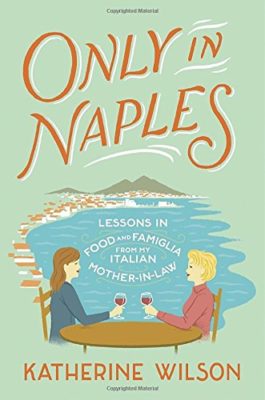 Now assemble the layers of the parmigiana in an 8-by-8-inch casserole dish. Start by putting a few spoonfuls of tomato sauce on the bottom of the dish and smoothing it into a red carpet with the back of your wooden spoon. Then arrange the first layer of eggplant slices side by side across the bottom of the dish. Spread another layer of tomato sauce on top of the eggplant, and sprinkle a few spoonfuls of Parmesan cheese evenly across it. Tear some basil leaves with your fingers (never touch basil with a knife, because it alters the taste!), and drop the torn leaves to the north, south, east, and west. Then distribute about a third of the fior di latte cubes.
Now assemble the layers of the parmigiana in an 8-by-8-inch casserole dish. Start by putting a few spoonfuls of tomato sauce on the bottom of the dish and smoothing it into a red carpet with the back of your wooden spoon. Then arrange the first layer of eggplant slices side by side across the bottom of the dish. Spread another layer of tomato sauce on top of the eggplant, and sprinkle a few spoonfuls of Parmesan cheese evenly across it. Tear some basil leaves with your fingers (never touch basil with a knife, because it alters the taste!), and drop the torn leaves to the north, south, east, and west. Then distribute about a third of the fior di latte cubes.
The next layer of eggplant slices should be placed cross-wise to the one before, so that the parmigiana is easier to cut. Continue with the same pattern—eggplant slices (each layer running crosswise to the one before), sauce, Parmesan, basil, and fior di latte.
Stop the pattern after the Parmesan. The top of the parmigiana should be Parmesan-dotted red, with only a vague hint of the brown treasures inside. Bake at 375 degrees for about 25 minutes, or until you see a crust forming on the top. Serve at room temperature.
If your parmigiana turns out greasy or is swimming in oil, please don’t mention to anyone where you got the recipe.
Katherine Wilson
http://katherinewilsonwriter.com/
Italy
April 2018
Photo credit ©KatherineWilson


